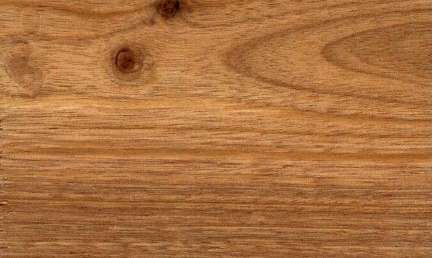
Camphorwood (Cinnamomum iners)
Family: Lauraceae
Common names: Camphorwood, Camphur wood, Cinnamon, Cinnamonwood, Cinnanmon, Dalchini, Gondhori, Hmanthein, Hmanthin, Kadeu, Kajoe tedja, Kalingag, Karawe, Kayu, Kayu manis, Kayu manis hutan, Kemangi, Kitedja, Kusunoki, Lelang, Medang, Ohez, Singga betina, Tedja, Teja badak
Distributed in: Brunei, Burma, India, Indonesia, Malaysia, Myanmar, Philippines, Thailand, Vietnam (Oceania and S.E. Asia)
Distribution overview: It is common in India and endemic in Western Ghats.
Common uses: Balusters, Baskets, Blinds, Building construction, Building materials, Cabinetmaking, Chairs, Chests, Concealed parts (Furniture), Construction, Desks, Dining-room furniture, Dowell pins, Dowells, Drawer sides, Fine furniture, Floor lamps, Food containers, Furniture , Furniture components, Furniture squares or stock, Hatracks, Interior construction, Kitchen cabinets, Light construction, Living-room suites, Moldings, Office furniture, Planks, Radio - stereo - TV cabinets, Rustic furniture, Shutters, Sills, Stairworks, Stools, Stringers, Tables , Utility furniture, Wardrobes, Windows
Environment profile: Very little threat to its natural environment.
Tree size: Trunk diameter is 150-200 cm
Colors: the heart isReddish brown, Yellowish tanand the sapwoodWhite to yellow, Yellow.The grain isOther figure, the textureMediumand the lusterLow
Natural durability: Resistant to termites, Susceptible to insect attack
Odor: Spicy scent
Kiln Schedules: T10 - D2 (4/4) US
Kiln Drying Rate: Slow
Drying Defects: Internal Honeycombing Possible, Splitting
Ease of Drying: Variable
Blunting Effect: Moderate
Boring: Fairly difficult to very difficult
Carving: Fairly Difficult to Very Difficult
Cutting Resistance: Moderate to saw
Gluing: Fairly Easy to Very Easy
Mortising: Fairly Difficult to Very Difficult
Moulding: Fairly Difficult to Very Difficult
Movement in Service: Fairly Difficult to Very Difficult
Nailing: Fairly Easy to Very Easy, Pre-Boring Recommended
Planing: Very Good to Excellent
Resistance to Impregnation: Resistant sapwood
Response to hand tools: Fairly Difficult to Difficult to Work
Routing recessing: Fairly Difficult to Very Difficult
Veneering qualities: Difficult to veneer
Steam bending: Unsuitable
Screwing: Pre-boring recommended
; Turning: Fairly Difficult to Very Difficult
Polishing: Very Good to Excellent; Staining: Very Good to Excellent;
- Numerical data Metric
- Numerical data English
- Strength properties
- References
 |
 |
 |
 |
| Item |
Green |
Dry |
Metric |
| Specific Gravity |
0,47 |
0,54 |
|
| Density |
|
624 |
kg/m3 |
| Bending Strength |
665 |
997 |
kg/cm2 |
| Crushing Strength |
49 |
64 |
kg/cm2 |
| Hardness |
|
454 |
kg |
| Impact Strength |
78 |
81 |
cm |
| Shearing Strength |
|
95 |
kg/cm2 |
| Stiffness |
115 |
133 |
1000 kg/cm2 |
| Tangential Shrinkage |
6 |
|
% |
| Radial Shrinkage |
3 |
|
% |
| Weight |
657 |
608 |
kg/m3 |
| Maximum Load |
0,56 |
0,91 |
cm-kg/cm3 |
| Toughness |
|
|
cm-kg |
| Static Bending |
381 |
526 |
kg/cm2 |
|
 |  |  |  | | Item | Green | Dry | English | | Bending Strength | 9470 | 14191 | psi | | Crushing Strength | 706 | 921 | psi | | Density | | 39 | lbs/ft3 | | Hardness | | 1001 | lbs | | Impact Strength | 31 | 32 | inches | | Maximum Crushing Strength | 4398 | 7044 | psi | | Shearing Strength | | 1357 | psi | | Static Bending | 5429 | 7487 | psi | | Stiffness | 1640 | 1892 | 1000 psi | | Work to Maximum Load | 8 | 13 | inch-lbs/in3 | | Specific Gravity | 0.47 | 0.54 | | | Weight | 41 | 38 | lbs/ft3 | | Radial Shrinkage | 3 | | % | | Tangential Shrinkage | 6 | | % | | Volumetric Shrinkage | 10 | | % | |
Toughness-Hammer drop (Impact Strength) = low
Shrinkage, Volumetric = moderate
Shrinkage, Radial = small
Shrinkage, Radial = moderate
Shearing strength (parallel to grain) = low
Resists denting and marring
Modulus of Elasticity (stiffness) = medium
Max. crushing strength = medium
Heavy
Hardness = medium
Hardness (side grain) = soft
Density = high
Density (dry weight) = 38-45 lbs/cu. ft.
Compression strength (parallel to grain) = high
Bending strength (MOR) = medium
Bending strength (MOR) = high
Browne, F.G.,1955,Forest Trees of Sarawak and Brunei and their Products.,Government Printing Office, Kuching, SarawakBurgess, P.F.,1966,Timbers of Sabah,Sabah Forest Record, no.6Desch, H. E. 1957. Manual of Malayan Timbers - Volume I. Malayan Forest Records, No. 15. Malaya Publishing House Ltd., Singapore.Kraemer, J.H.,1951,Trees of the Western Pacific Region,West Lafayette, Indiana U.S.A.Limaye, V. D.1954.Grouping of Indian Timbers and Their Properties, Uses, and Suitability.Indian Forest Records, New Series.Timber Mechanics, Vol. 1, No. 2. Manager of Publications (Publisher, Delhi.Limaye, V. D. and B. R. Sen.1956. Weights and Specific Gravities of Indian Woods.Indian Forest Records, New Series.Timber Mechanics, Vol. 1, No. 4.Manager of Publications (Publisher, Delhi.Menon, P.K.B.,1959,The wood anatomy of Malayan timbers: commercial timbers, 3. Light,hardwoods,Malaysian Forest Research Institute Kepong, Research Pamplet, No. 27.Ng, F.S.P. (Ed,1989,Tree Flora of Malaya A Manual for Foresters Volume 4,Forest Research Institute Malaysia Ministry of Primary IndustriesSekhar, A. C. and S. S. Bhatnager.1957.Physical and Mechanical Properties of Timbers Tested at the Forest Research Institute, Indian Forest Records, Timber Mechanics Branch Vol.1, No. 6, Dehra Dun, India.Sekhar, A.C., Bhatnagar, S.S.,1957,Physical and mechanical properties of woods tested at Forest Research,Institute Report V,Indian Forest Records (n.s) Timber Mechanics 1(6) pp123-35WCMC.1992.Conservation Status Listing - Trees and Timbers of the World.World Conservation Monitoring Center - Plants Programme, Cambridge, CB3 ODL, United Kingdom.
|








